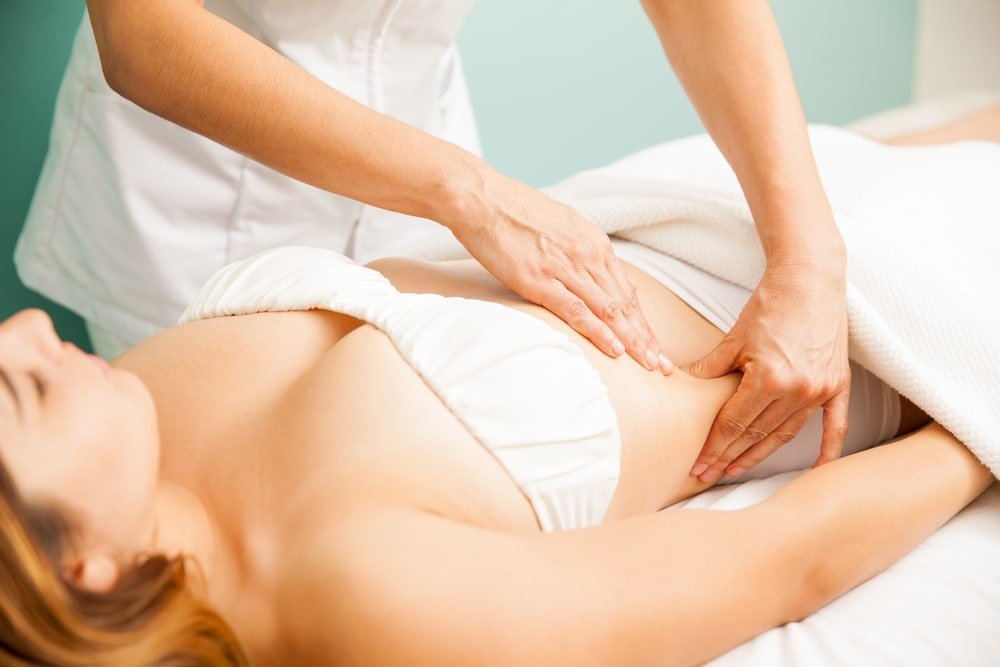
At Fit4Life Physiotherapy, we’re committed to providing high-quality lymphatic drainage massage services to our clients. Our team of registered massage therapists have extensive experience in providing lymphatic drainage massages. These massages use gentle, light-pressure techniques that are designed to encourage the flow of lymphatic fluids and keep your lymphatic system performing optimally.
We understand that the lymphatic system plays a crucial role in overall health and wellness, which is why we offer a range of services to help our clients feel their best. Whether you are dealing with lymphedema, post mastectomy, lymph node removal surgery, or general pain relief, we’re here to help.
What is a Lymphatic Drain Massage?
Lymphatic drainage massages are a type of gentle, non-invasive massage therapy designed to help the lymphatic system function at its best. This often used treatment involves applying light pressure techniques to specific areas of the body to encourage the flow of excess lymph fluid. The goal is to help your body get rid of waste, toxins, and excess fluid more efficiently.
The Lymphatic System
The lymphatic system is a network of vessels and nodes throughout the body that help remove excess fluid and waste from the body using a fluid called lymph. This system plays a critical role in the immune system, helping to fight off infections, diseases and other ailments. When the lymphatic system is not working correctly, it can lead to a range of health problems, including edema, lymphedema, and several other conditions.
How Lymphatic Drain Massages Work
Lymphatic Drainage Massages work by stimulating the lymphatic system to function more effectively. The massage technique helps to increase the flow of lymphatic fluid, which carries away waste and toxins from the body. This practice was developed back in the 1930s by physicians Emil Vodder and Estrid Vodder who were initially researching a cure for lymphedema. This type of massage can also help to reduce swelling, improve blood circulation too, and boost the immune system.
Types of Lymphatic Drainage Massages
There are four approaches when it comes to lymphatic drainage massages, which include the following:
- Vodder: This technique uses sweeping motions around the affected area.
- Foldi: Like the Vodder technique, the Foldi method involves the massage therapist alternating between circular hand motions and allowing the body to relax.
- Leduc: This approach includes hand motions to collect lymph fluid before the massage therapist redirects it into the larger lymphatic system, where it’s reabsorbed.
- Casley-Smith: During this technique, the massage therapist will use circular hand motions, mainly the sides or palms of the hand.
Each method relies on using gentle movements to promote lymph flow. These massages start at the part of the limb closest to the torso and move outwards.
Lymphatic Drainage Massage Pricing
FAQ
You should get a lymphatic drainage massage once a month for the best results. You can also perform short, at-home lymphatic drainage massages on one or two body parts per day. Providing brief massages at home can benefit your lymphatic system and promote relaxation.
While lymph drainage massages are beneficial and safe to relieve lymphedema, there are some conditions and circumstances where a massage may not be the best choice.
Those conditions include the following:
- Heart conditions
- Kidney failure
- Blood clots
- Infections
You should consult a healthcare provider before considering a lymphatic massage. That way, a doctor can determine if it will negatively affect your physical health.
A lymphatic drainage massage is good for treating lymphedema, which is the swelling of lymph nodes. In addition, these massages can help with rheumatoid arthritis, fibromyalgia, and chronic venous insufficiency (CVI). Lymphatic drainage massages can increase blood flow, drain lymph nodes, and decrease tissue swelling.
During a lymphatic drainage massage, your massage therapist will force lymph fluid out of the bloodstream using circular hand motions/techniques and redistribute it back into the blood through the lymph vessels. Because lymph fluid only ever moves toward the heart, your massage therapist will likely start at a limb nearest to the torso and work their way outward.



